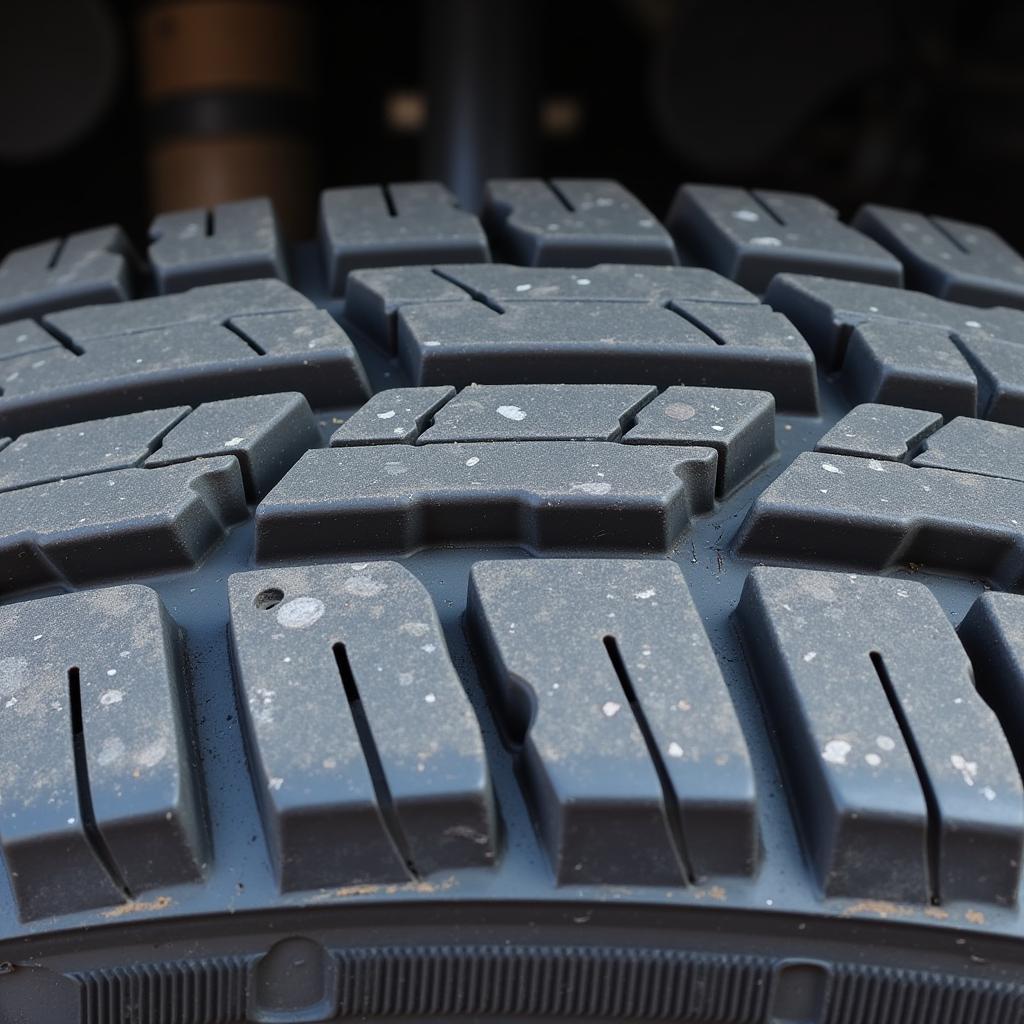It’s a question that lingers in the back of many drivers’ minds: could a mechanical failure be the cause of my next car accident? While driver error undoubtedly reigns supreme as the leading cause of accidents, vehicle malfunctions play a significant, albeit smaller, role. Understanding this percentage and the common culprits behind these mechanical failures is crucial for both individual drivers and automotive professionals.
Unmasking the Numbers: Car Problems vs. Driver Error
While it’s challenging to pinpoint an exact percentage of accidents caused solely by car problems, the National Highway Traffic Safety Administration (NHTSA) sheds some light on the matter. Their data indicates that mechanical failures contribute to approximately 2% of all car crashes. This seemingly small number becomes more impactful when considering the potential severity of accidents caused by brake failure, tire blowouts, or steering malfunctions.
Beyond the Statistics: Digging Deeper into Mechanical Failures
While 2% might seem insignificant, it represents thousands of accidents annually. It’s important to note that this number doesn’t encompass accidents where vehicle maintenance, or lack thereof, played a contributing factor. Here’s a closer look at some of the most common car problems leading to accidents:
1. Brake System Failures: A Recipe for Disaster
A vehicle’s braking system is arguably its most crucial safety feature. When brakes fail, the potential for a serious accident increases exponentially.
- Wworn brake pads: These are often the first sign of trouble, indicated by a screeching sound when braking.
- Brake fluid leaks: A telltale sign is a puddle of fluid under your car.
- Malfunctioning ABS systems: This can lead to wheels locking up during hard braking.
2. Tire Troubles: More Than Just a Flat
Tires are the only point of contact between your vehicle and the road. A sudden blowout or a slow leak can have disastrous consequences, especially at high speeds.
- Underinflated tires: This can lead to increased heat and potential blowouts.
- Worn tire tread: Reduces traction, especially on wet surfaces.
- Damaged tires: Bulges, cuts, or punctures compromise tire integrity.
 Worn tire tread
Worn tire tread
3. Steering System Issues: Losing Control
A responsive steering system is essential for safe vehicle control. Any issues here can make it difficult or impossible to steer, leading to a loss of control and potential accidents.
- Power steering fluid leaks: Can make steering heavy and difficult.
- Worn steering components: Leads to excessive play and unpredictable handling.
- Alignment problems: Can cause the vehicle to pull to one side.
4. Visibility Problems: When You Can’t See the Danger
Clear visibility is crucial for safe driving. Anything that obstructs a driver’s view increases the risk of an accident.
- Worn windshield wipers: Reduce visibility during rain or snow.
- Malfunctioning headlights or taillights: Compromise visibility at night or in low-light conditions.
- Cracked windshields: Can obstruct the driver’s field of vision.
5. Engine Failure: A Sudden Loss of Power
While not as common as other mechanical failures, engine problems can lead to sudden stalls, loss of power, and even fires.
- Overheating: Can cause significant engine damage and lead to stalls.
- Loss of engine oil: Lack of lubrication can cause catastrophic engine failure.
“Regular vehicle maintenance is not just about keeping your car running smoothly; it’s about ensuring your safety and the safety of others on the road,” says John Miller, Senior Automotive Technician at Autotippro. “A well-maintained car is a safer car.”
Minimizing Risks: The Importance of Proactive Maintenance
While not all car problems are preventable, regular maintenance significantly reduces the risk of a mechanical failure leading to an accident.
- Stick to Your Service Schedule: Follow the manufacturer’s recommended maintenance schedule.
- Pay Attention to Warning Signs: Be aware of any unusual noises, smells, or vibrations coming from your car.
- Conduct Regular Inspections: Regularly check your tire pressure, fluids, lights, and wipers.
- Don’t Delay Repairs: Address any potential issues promptly.
Need Expert Automotive Advice?
Don’t wait until a minor issue escalates into a major problem. Contact the automotive experts at AutoTipPro today. We’re here to answer your questions, provide reliable repairs, and keep your vehicle running safely and smoothly.
Contact us at: +1 (641) 206-8880
Visit our office: 500 N St Mary’s St, San Antonio, TX 78205, United States
FAQs
1. How often should I check my tire pressure?
It’s best to check your tire pressure monthly and before any long road trips.
2. What are some signs of brake problems?
Look out for screeching or grinding noises when braking, a vibrating brake pedal, or a car that pulls to one side when braking.
3. How long can I drive with the check engine light on?
While it’s not recommended, you can often drive a short distance with the check engine light on. However, it’s crucial to get it diagnosed and repaired as soon as possible.
4. Do I need to change my oil every 3,000 miles?
Not necessarily. Refer to your owner’s manual for the recommended oil change interval, which can vary depending on your vehicle and driving conditions.
5. How can I find a trustworthy mechanic?
Ask friends, family, or neighbors for recommendations. Look for mechanics who are certified and have positive online reviews.




Leave a Reply